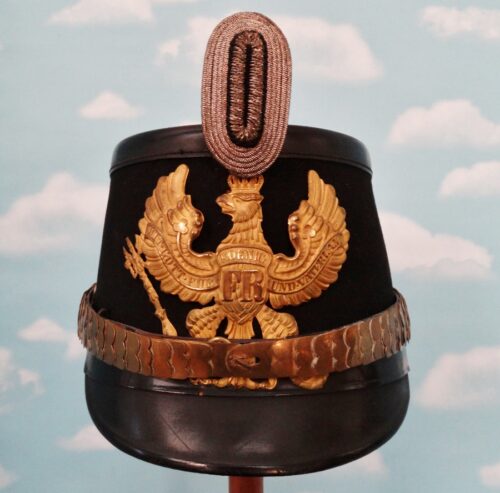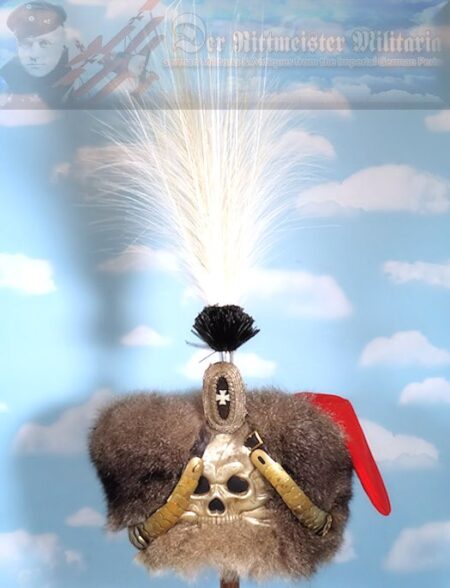Description
This is a wonderful example of an NCO’s tschako for the See-Bataillon. The See-Bataillon was to the Kaiserliche Marine as the U.S. Marine Corps (U.S.M.C.) is to the U.S. Navy. The troops were responsible for security aboard larger naval vessels and for security at German embassies overseas. The See-Bataillon also played a large role in supplying ground troops for Germany’s colonies. See-Bataillon Nr III served an especially important role in China. Prior to the buildup leading to WW I, only three See-Bataillone existed. See-Bataillon Nr I and Nr II were joined by other later-raised units to serve as Marine-Infanterie and Marine-Artillerie units in Flanders.
The tschako sports the typical shape for an NCO in the See-Bataillon. The leather body is quite pleasing, overall. It reveals some light spidering (cracking), and a gouge or two. [We will show it in the photographs that accompany the description]. The See-Bataillon’s wappen serves as the helmet’s central theme. It also sports a handsome set of gilt chin scales. A red, black and white feldzeichen (field badge) is attached directly over the wappen. Further examination of the tschako shows it has no kokarde, which is 100% correct. As the See-Bataillon was a national organization, it would not display any state’s kokarde. Furthermore, as the feldzeichen sports Germany’s national colors (red, black and white), a kokarde would be redundant.
[REFERENCE/RESEARCH NOTE: The last interesting piece of information comes from Jim Turinetti, our resident headdress expert. We call on Jim quite often for headdress details’ clarification. I often say (and not in total jest) that he has forgotten more about Imperial German headdresses than I will ever know. We also remind you about Jim’s wonderful publications, which we feature on our website. We receive NO compensation from Jim and the TOTAL proceeds from the sale of his books go to him. We offer them because I believe they are the best on the market for what they do, regardless of price. Jim’s scholarship is unquestionable. Considering the many hours he has spent in research, he is not in this for the money but for the love of the hobby. I urge you to support Jim while helping yourself to a better understanding of headdress and related items. Check out all seven (7) of Jim’s books on our IMPERIAL GERMAN HEADDRESS NR. 3 MERCHANDISE PAGE, (click here to see).].
Inside the tschako is a well used but complete leather sweatband, and a complete silk liner. All of this further indicates it is an NCO’s tschako. HOWEVER, a curious thing is written on the silk liner, “Ltn. Hunitz.” Perhaps this NCO was promoted to officer status and never upgraded his tschako or bought a newer one and relegated this tschako to secondary use. At any rate, it is a lovely tschako. It would make an excellent addition to any collection.











